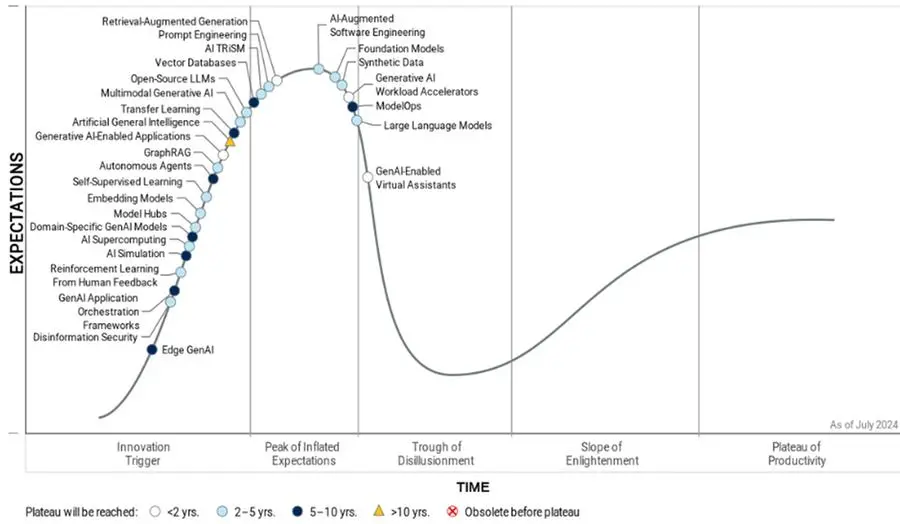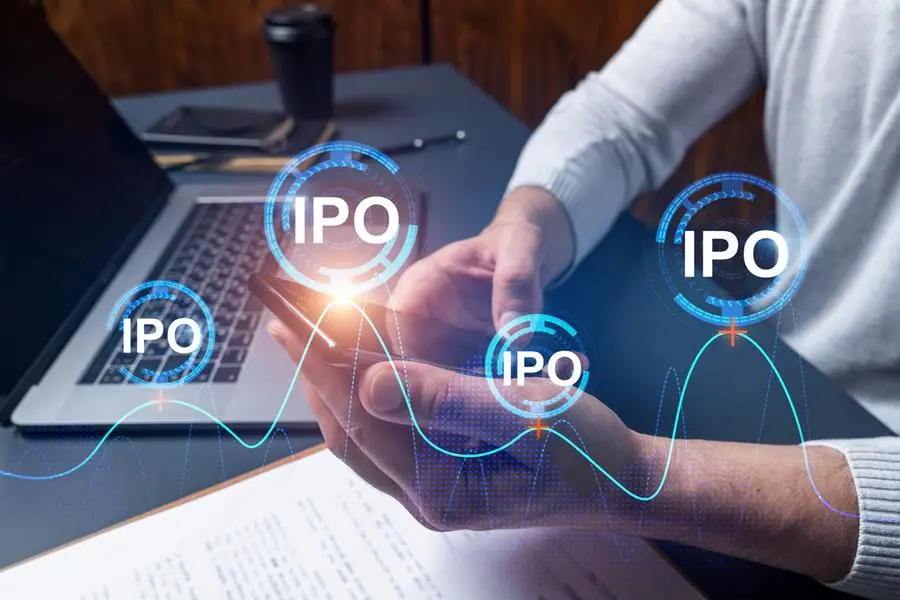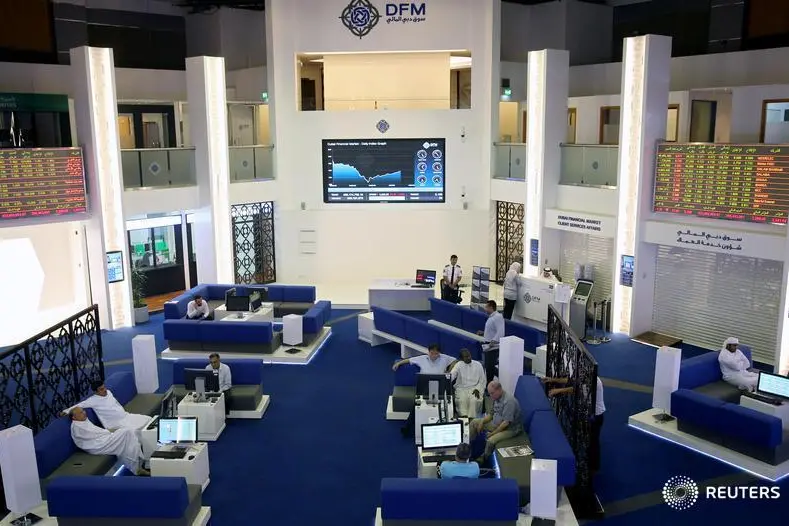PHOTO
Matthew Cain. Image Courtesy: Gartner
DUBAI, UAE – Forty percent of generative AI (GenAI) solutions will be multimodal (text, image, audio and video) by 2027, up from 1% in 2023, according to Gartner, Inc. This shift from individual to multimodal models provides an enhanced human-AI interaction and an opportunity for GenAI-enabled offerings to be differentiated.
Erick Brethenoux, Distinguished VP Analyst at Gartner, said, “As the GenAI market evolves towards models natively trained on more than one modality, this helps capture relationships between different data streams and has the potential to scale the benefits of GenAI across all data types and applications. It also allows AI to support humans in performing more tasks, regardless of the environment.”
Multimodal GenAI is one of two technologies identified in the 2024 Gartner Hype Cycle for Generative AI, where early adoption has potential to lead to notable competitive advantage and time-to-market benefits. Along with open-source large language models (LLMs), both technologies have high impact potential on organizations within the next five years.
Among the GenAI innovations Gartner expects will reach mainstream adoption within 10 years, two technologies have been identified as offering the highest potential - domain-specific GenAI models and autonomous agents (see Figure 1).
Figure 1: Hype Cycle for Generative AI, 2024


Source: Gartner (September 2024)
“Navigating the GenAI ecosystem will continue to be overwhelming for enterprises due to a chaotic and fast-moving ecosystem of technologies and vendors,” said Arun Chandrasekaran, Distinguished VP Analyst at Gartner. “GenAI is in the Trough of Disillusionment with the beginning of industry consolidation. Real benefits will emerge once the hype subsides, with advances in capabilities likely to come at a rapid pace over the next few years.”
Multimodal GenAI
Multimodal GenAI will have a transformational impact on enterprise applications by enabling the addition of new features and functionality otherwise unachievable. The impact is not limited to specific industries or use cases, and can be applied at any touchpoint between AI and humans. Today, many multimodal models are limited to two or three modalities, though this will increase over the next few years to include more.
“In the real world, people encounter and comprehend information through a combination of different modalities such as audio, visual and sensing,” said Brethenoux. “Multimodal GenAI is important because data is typically multimodal. When single modality models are combined or assembled to support multimodal GenAI applications, it often leads to latency and less accurate results, resulting in a lower quality experience.”
Open-Source LLMs
Open-source LLMs are deep-learning foundation models that accelerate enterprise value from the implementation of GenAI, by democratizing commercial access and allowing developers to optimize models for specific tasks and use cases. Additionally, they provide access to developer communities in enterprises, academia and other research roles that are working toward common goals to improve and make the models more valuable.
“Open-source LLMs increase innovation potential through customization, better control over privacy and security, model transparency, ability to leverage collaborative development, and potential to reduce vendor lock-in,” said Chandrasekaran. “Ultimately, they offer enterprises smaller models that are easier and less costly to train, and enable business applications and core business processes.”
Domain-Specific GenAI Models
Domain-specific GenAI models are optimized for the needs of specific industries, business functions or tasks. They can improve use-case alignment within the enterprise, while delivering improved accuracy, security and privacy, as well as better contextualized answers. This reduces the need for advanced prompt engineering compared with general-purpose models and can lower hallucination risks through targeted training.
“Domain-specific models can achieve faster time to value, improved performance and enhanced security for AI projects by providing a more advanced starting point for industry-specific tasks,” said Chandrasekaran. “This will encourage broader adoption of GenAI because organizations will be able to apply them to use cases where general-purpose models are not performant enough.”
Autonomous Agents
Autonomous agents are combined systems that achieve defined goals without human intervention. They use a variety of AI techniques to identify patterns in their environment, make decisions, invoke a sequence of actions and generate outputs. These agents have the potential to learn from their environment and improve over time, enabling them to handle complex tasks.
“Autonomous agents represent a significant shift in AI capabilities,” said Brethenoux. “Their independent operation and decision capabilities enable them to improve business operations, enhance customer experiences and enable new products and services. This will likely deliver cost savings, granting a competitive edge. It also poses an organizational workforce shift from delivery to supervision.”
Gartner clients can read more in the report “Hype Cycle for Generative AI, 2024.” Learn more in the complimentary Gartner webinar “What Mature Organizations Do Differently for AI Success.”
Gartner CIO & IT Executive Conference
Gartner analysts will provide additional analysis on insights and trends shaping the future of IT and business, including accelerating business transformation, application modernization, infrastructure and operations at the Gartner CIO & IT Executive Conference, taking place September 23-25 in São Paulo and November 19-21 in Dubai. Follow news and updates from the conference on X using #GartnerCIO.
About Gartner for Information Technology Executives
Gartner for Information Technology Executives provides actionable, objective insight to CIOs and IT leaders to help them drive their organizations through digital transformation and lead business growth. Additional information is available at www.gartner.com/en/information-technology.
Follow news and updates from Gartner for IT Executives on X and LinkedIn using #GartnerIT. Visit the IT Newsroom for more information and insights.
About Gartner
Gartner, Inc. (NYSE: IT) delivers actionable, objective insight that drives smarter decisions and stronger performance on an organization’s mission-critical priorities. To learn more, visit gartner.com.
CONTACTS:
Anisha Pamnani
Wallis
gartner@wallispr.com




















